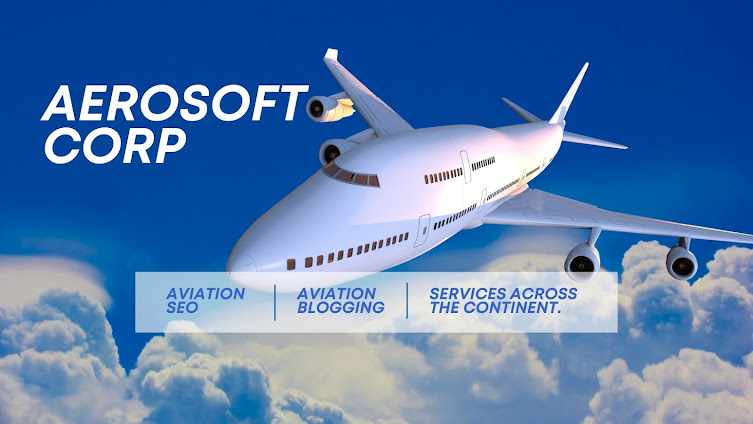Case study:
Over the past 30 years the Airline Industry has
seen a number of changes, such as the increased market share of low-cost
carriers (LCCs) as well as facing its fair share of challenges, from volcanoes
erupting to infectious disease outbreaks. The next 30 years are likely to be
more turbulent, as a new wave of technological change and innovation unfurls.
Some see this wave sweeping the airline industry away, citing as precedents the
taxi industry before Uber arrived, the music industry before internet
downloads, and the printing industry before computer design software.
Mobility and its pillars of transport (air, inland
and maritime) are at the very centre of our socio-economic fabric. They
underpin social connections and facilitate access to goods and services,
including trade, jobs, health care and education. In today’s world, mobility by
air, road and water is all about efficiencies, speed, interconnectivity and
accessibility by all. However, this raises the issue about sustainability. The
UN predicts that by 2050 two thirds of the world population will live in cities.
The Air transport industry is expanding and The future of Aviation is a Bright one.
In 2017, airlines worldwide carried around 4.1
billion passengers. They transported 56 million tonnes of freight on 37 million
commercial flights. Every day, airplanes transport over 10 million passengers
and around USD 18 billion worth of goods.
This indicates the significant economic impact of
aviation on the world economy, which is also demonstrated by the fact that
aviation represents 3.5 per cent of the gross domestic product (GDP) worldwide
(2.7 trillion US dollars) and has created 65 million jobs globally.
Aviation provides the only rapid worldwide
transportation network, generating economic growth, creating jobs, and
facilitating international trade and tourism.
Aviation has become the enabler of global business
and is now also being recognized by the international community as an essential
enabler to achieving the UN Sustainable Development Goals.
The aviation the sector is growing fast and will continue to grow. The most recent estimates
suggest that the demand for air transport will increase by an average of 4.3% per
annum over the next 20 years.
Indian Aviation sector:
Indian Aviation sector is both poised to take off
as far as the future is concerned and is soaring high as far as the present is
concerned.The Aviation sector in India has come
a long way from the humble beginnings in the pre-independence era where the
legendary JRD Tata, pioneered the industry and introduced a small turboprop
plane as the first connection to the outside world by air.
Having said that, there are a few bottlenecks
or chokepoints that have stymied the development and the growth of the Indian
Aviation Sector. Prominent among these is the capacity addition in the airports
across India where the present infrastructure is unable to support the
ambitious expansion plans of the various airlines.
Indeed, even after building gleaming and
glittering airports in all the Metros under the PPP or the Public Private
Partnership model, airlines are routinely denied landing rights and parking
bays for want of capacity.
Further, the fact that the blistering pace of
growth in the sector means that despite adding capacity in a quick manner, Airports are unable to handle the ever-increasing load of footfalls in terms of
arrivals and departures.
Though the Indian Government has put in place
policies such as the UDAAN Scheme, the Regional Connectivity Scheme, and
various others aimed at persuading and incentivizing airlines to connect to
remote locations, the pathetic state of the infrastructure in such areas means
that such schemes would take time to fructify.
Of course, the massive push to develop Tier 2
and Tier 3 airports is clearly a right step in the direction of broadening the
base of the infrastructure pyramid so that flyers from rural areas can benefit
as well.
However, this push is succeeding in states
where the state governments are actively encouraging such developments whereas
in other regions, the initiative is lagging the former.
Road Ahead
India’s Aviation industry is largely untapped
with huge growth opportunities, considering that air transport is still
expensive for majority of the country’s population, of which nearly 40 per cent
is the upwardly mobile middle class.
The industry stakeholders should engage and
collaborate with policymakers to implement efficient and rational decisions
that would boost India’s civil aviation industry. With the right policies and
relentless focus on quality, cost and passenger interest, India would be well
placed to achieve its vision of becoming the third-largest aviation market by
2020. The expenditure of Indian travelers is expected to grow up to Rs 9.5
lakh crore (US$ 136 billion) by 2021. Due to rise in demand in air travel,
India will need 2,380 new commercial Airplanes by 2038.
Utsa Mukherjee [MBA HR]
Manager HR
AirCrews Aviation Pvt Ltd
Utsa.Mukherjee@aircrewsaviation.com
Folow Utsa @Social Media
Facebook: www.facebook.com/
Twitter: https://twitter.com/utsamuit
Linkedin:
www.linkedin.com/in/
Instagram: www.instagram.com/
Quora: www.quora.com/
Manager HR
AirCrews Aviation Pvt Ltd
Utsa.Mukherjee@aircrewsaviation.com
Folow Utsa @Social Media
Facebook: www.facebook.com/
Twitter: https://twitter.com/utsamuit
Linkedin:
www.linkedin.com/in/
Instagram: www.instagram.com/
Quora: www.quora.com/































No comments:
Post a Comment